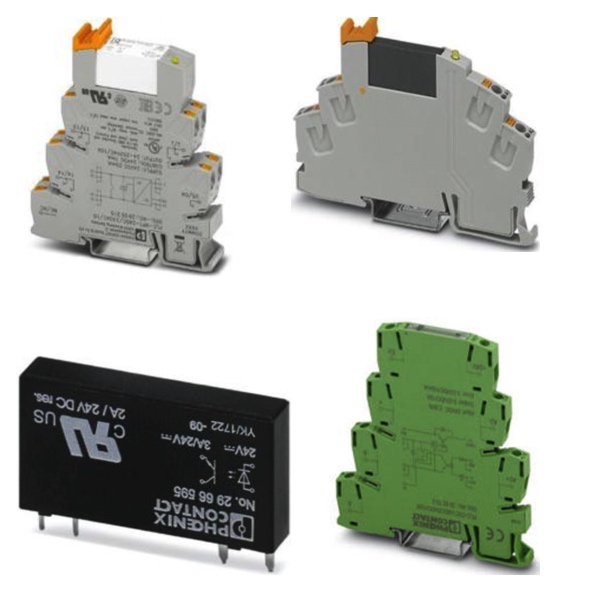Phoenix Contact Solid State Relays

Phoenix Contact solid state relays (SSR) are designed for fast, reliable switching in industrial control and automation systems. These DIN rail–mounted relays are single-pole, single-throw, normally open devices that use semiconductor and optical technology rather than mechanical contacts. This design eliminates arcing, contact wear, and audible switching noise, making solid state relays well suited for applications requiring high switching speed and long service life.
Because they contain no moving parts, Phoenix Contact solid state relays are highly resistant to vibration, shock, dust, gases, and other environmental contaminants. They are commonly used in heating control systems, compressor soft-start applications, fan and blower control, valve actuation, and lighting control where silent operation and rapid response are required. Their non-arcing operation also makes them ideal for motion control applications such as conveyors, lifts, hoists, and elevator systems.
Phoenix Contact PLC-INTERFACE solid state relays feature a compact 14 mm housing and support switching voltages up to 250 V DC with currents up to 10 A. Hybrid designs reduce power dissipation and extend service life while maintaining reliable load switching. Available with push-in, screw, or spring-cage terminal connections, these relays integrate easily into modern control panels and automation architectures.
FAQs
Q: What is a solid state relay?
A solid state relay uses semiconductor and optical components to switch electrical loads without mechanical contacts, providing fast, silent, and wear-free operation.
Q: What are Phoenix Contact solid state relays used for?
They are used in applications such as heating control, lighting dimming, motor soft-start, valve control, and motion systems where fast switching and vibration resistance are required.
Q: How do solid state relays differ from electromechanical relays?
Solid state relays have no moving parts and do not produce contact noise or arcing, while electromechanical relays rely on physical contacts and electromagnets to switch loads.
Q: What voltage and current ratings are available?
Phoenix Contact PLC-INTERFACE solid state relays support switching voltages up to 250 V DC and currents up to 10 A, depending on the model.
Q: What terminal connection types are available?
Phoenix Contact solid state relays are available with push-in, screw, and spring-cage terminal connections for flexible installation.
Why Buy Phoenix Contact Solid State Relays from RSP Supply
RSP Supply offers a wide selection of Phoenix Contact solid state relays designed for reliable, high-speed switching in industrial automation and control systems. Our product lineup includes compact PLC-INTERFACE modules with multiple connection options to support modern panel designs. Customers rely on RSP Supply for technical expertise, dependable product availability, and industrial relay solutions built for long-term performance.

